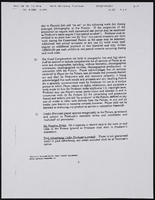Search the Special Collections and Archives Portal
Search Results

The Wheel of Rotary Las Vegas Rotary Club newsletter, March 9, 1950
Date
Archival Collection
Description
Text
Vassili Sulich Papers
Identifier
Abstract
The Vassili Sulich Papers (1951-2005) document the life of Vassili Sulich: ballet dancer, choreographer, and co-founder of the Nevada Dance Theatre, the first professional dance company in Nevada. Included are correspondence, newspaper clippings, newsletters, photographs, posters, and scrapbooks.
Archival Collection

Photograph of the outside view of Binion's Horseshoe Parking Garage (Las Vegas), 1962
Date
Archival Collection
Description
Facade of the Horseshoe parking garage. Stamped on original: "Las Vegas New Bureau - Las Vegas, Nevada. Convention Center - Photographers - Don English. Jerry Abbott. Joe Buck. Milt Palmer. John Cook."
Site Name: Horseshoe Club
Address: 128 East Fremont Street
Image

Photograph of the Horseshoe Hotel & Casino at night (Las Vegas), 1960s
Date
Archival Collection
Description
Night view of the Horseshoe Hotel and Casino. Stamped on original: "Jay Florian Mitchell. Photographer. 614 So. 6th DU 4-5148 Las Vegas, Nevada. Douglass Studio, Inc. 614 South Sixth. Dudley 4-5148. Las Vegas, Nevada."
Site Name: Horseshoe Club
Address: 128 East Fremont Street
Image






